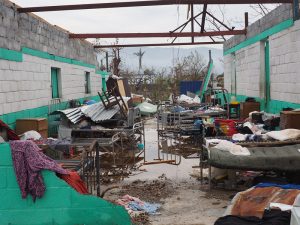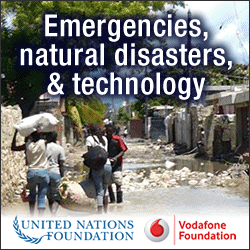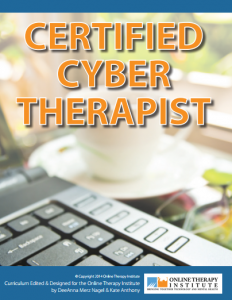A competent practitioner working online will always adhere at least the following minimum standards and practices in order to be considered to be working in an ethical manner.
Practitioners have a sufficient understanding of technology.
Technology basics are required for practitioners who choose to deliver therapeutic services via technology. Practitioners will possess a basic understanding of technology as the technology relates to delivery of services
- Encryption: Practitioners understand how to access encrypted services to store records and deliver communication. Records storage can be hosted on a secure server with a third-party, stored on the practitioners’ hard drive utilizing encrypted folders or stored on an external drive that is safely stored.
- Backup Systems: Records and data that are stored on the practitioners’ hard drive are backed up either to an external drive or remotely via the Internet.
- Password Protection: Practitioners take further steps to ensure confidentiality of therapeutic communication and other materials by password protecting the computer, drives and stored files or communication websites.
- Firewalls: Practitioners utilize firewall protection externally or through web-based programs.
- Virus Protection: Practitioners protect work computers from viruses that can be received from or transmitted to others, including survivors.
- Hardware: Practitioners understand the basic running platform of the work computer and know whether or not a survivors’ hardware/platform is compatible with any communication programs the practitioner uses.
- Software: Practitioners know how to download and operate software and assist survivors with the same when necessary to the delivery of services.
- Third-party services: Practitioners utilize third-party services that offer an address and phone number so that contact is possible via means other than email. This offers a modicum of trust in the third-party utilized for such services as backup, storage, virus protection and communication.
Practitioners work within a disaster relief organization
Disaster mental health practice requires access and resources beyond the ability of independent practitioners. Thus practitioners must link with a disaster relief organization as an independent contractor or employee.
- Disaster relief organizations for provide the structure and technology for communication, clinical supervision, malpractice coverage, etc.
- Disaster relief organizations collaborate with local disaster relief resources to ensure pre-disaster planning and placement of on-site access and triage services for survivors in need of disaster mental health.
- Disaster relief organizations ensure practitioners are trained in using technology in providing mental health services, treating acute stress disorder, crisis counseling, cultural competence and diversity.
- Disaster relief organizations provide practitioners with pre-prepared briefing information on the local culture as it relates to disaster, trauma, mental health services, and other relevant topics.
- Disaster relief organizations provide practitioners with situational updates during a disaster as often as possible and necessary to enable the practitioner to understand and advise the survivor’s circumstances.
- Disaster relief organizations set standards of care based on global and local community ethical, legal and regulatory requirements.
Practitioners work within their Scope of Practice.
Scope of practice indicates the specific area to which a practitioner may practice. Scope of practice in many geographic areas also defines where a practitioner may practice; whether the practitioner may practice across various geographical boundaries and within what parameters a practitioner may practice. Practitioners also follow local and regional laws and codes of ethics as applicable.
- Understanding of boundaries and limitations of ones’ specific discipline: Practitioners understand which assessments and interventions are allowed within their specific discipline. For instance, career counselors who have no training in mental health issues generally do not provide psychocounseling services.
- Understanding of specific laws or ethics within ones’ own discipline or geographic location: Practitioners understand the limits set forth by laws or ethics within the applicable geographic location. For instance, in the United States, Licensed Professional Counselors cannot call themselves Psychologists, and in the UK the term “Chartered Psychologist” is reserved by law for use only by those with proper recognition from the appropriate authorities. Certain states dictate what a practitioner can be called due to the implementation of Title laws.
- Practice laws and community standards for scope of practice in the practitioner’s home region is considered the baseline limitations to practice across geographic jurisdictions. Since there is no global standard for qualifications for practitioners, the home region is a reasonable default standard. Practitioners who are not allowed to practice independently in their home setting are provided direct and indirect/concurrent supervision by the disaster relief organization.
- Respect for the specific laws of a potential survivors’ geographic location: Practitioners understand that different geographic regions may offer additional limits to practice, particularly with regard to jurisdiction. For instance, a counsellor in the UK should be cognizant of the laws of a client who resides in a U.S. state such as California in which the law prohibits a practitioner who is not licensed in California from providing counseling to California residents.
- The disaster relief organization negotiates authority across legal barriers to technology assisted distance counseling in a disaster as it relates to scope of practice and liability insurance so as to supplement available local resources during a disaster response. This includes multicultural concerns for affected individuals such as expatriated clinicians who share cultures and languages with survivors.
Practitioners ensure they have suffienct personal and professional resources to provide services.
Practitioners are atune to their own physical, mental, and professional needs. Practitioners seek out peer consultation and supervision as needed in order to ensure quality services, and prevent burn out and vicarious traumatization.
Disaster relief organizations provide the means to communicate via technology.
The means to communicate across the world is beyond the reach of practitioners when the destination is a disaster zone. The Disaster relief organization provides the technological equipment, the technological expertise, preplace the equipment, provide on-site technological support and systems monitoring during operations and sufficient back up systems and plans to reasonably to ensure communication continuity.
Disaster relief organizations provide or ensure training, knowledge and supervision.
Training, knowledge and supervision regarding disaster mental health and technology is paramount to delivering a standard of care that is considered “best practice” within a global context. Practitioners are expected to demonstrate proficiency and competency through specialist training for online work, acute stress disorder, disaster mental health and crisis intervention, books, peer-reviewed literature and popular media. Clinical and/or peer supervision and support are mandated for all practitioners because of the unique multi-setting, technology based team collaborative effort required for distance counseling for disaster relief.
- Formal Training: Practitioners seek out sufficient formal training whenever possible through college, university or private settings. Formal training is displayed on the disaster relief organizations’ website.
- In-service Training: Practitioners are seek out and collaborate regularly in disaster mental health training through role playing disaster interventions in simulated scenarios. The disaster relief organizations ensures practitioners have frequent practice activations using realistic scenarios of distance counseling in disaster response.
- Cultural and Setting Specific Knowledge: Disaster relief organizations provide practitioners with sufficient information about the disaster setting and expected characteristics, needs, and current circumstances of the survivors.
- Informal Training: Practitioners seek out continuing education and professional development and conferences, conventions and workshops.
- Disaster relief organizations retains records of training of contracted and/or employed practitioners.
- Books: Practitioners read books written by the general public and professionals.
- Peer-reviewed Literature: Practitioners read peer-reviewed literature that includes the latest theories and research.
- Popular Media: Practitioners are informed through popular media such as magazines, newspapers, social networking sites, websites, television and movies and understand the impact of mental health and technology on the popular culture.
- Clinical/Peer Supervision: The disaster relief organization ensures sufficient clinical and/or peer supervision is delivered either face-to-face or via encrypted methods. Clinical supervision will be provided for all active cases concurrently as well as continuous opportunities for peer consultations.
- Administrative overview will include regular periodic review of the disaster response and debriefing for practitioners.
- Example Topics of study related to Training, Knowledge and Supervision (not an exhaustive list):
- Online Counseling
- Online Clinical Supervision
- Online Peer Supervision
- Cyberpsychology
- Text-based Counseling
- Telehealth
- Behavioral Telehealth
- Telepsychiatry
- Social Media
- Mixed Reality
- Online Relationships
- Disaster mental health and Technology
Disaster relief organizations display pertinent and necessary information on Websites.
Websites provide access to information for the general public, potential survivors, survivors and other professionals.
- Crisis Intervention Information: People may surf the internet seeking immediate help. Practitioners display crisis intervention information on the home page. Practitioners understand that people in crisis may visit the website from anywhere in the world. Offering global resources such as Befrienders’ International or The Samaritans is the best course of action.
- Organization Contact Information: Disaster relief organizations offer contact information that includes email, post address and a telephone or VOIP number. Survivors should have a post address for formal correspondence related to redress, subpoenas or other mailings requiring a signature of receipt. Clinicians will assist survivors in re-establishing communications including cases where the physical post address has been destroyed by the disaster event. Organizations state the amount of time an individual may wait for a reply to email or voice mail. Best practice indicates a maximum of two hours for replies during disaster events.
- Practitioner Education, License and/or Certification Information: Disaster relief organizations ensure practitioners list degrees, licenses and/or certifications as well as corresponding numbers. If the license, certification board, or professional body offers a website that allows the general public to verify information on a particular practitioner the license and certification listings should link directly to those verifying body websites. Practitioners list other formal education such as college or university courses, and consider listing online continuing education and professional development courses, and conference/convention attendance directly related to disaster mental health and technology.
- Terms of Use and Privacy Policy: Terms of Use, often all or in part, synonymous with a organizations’ informed consent, is available on the website either as or a downloadable document in multiple languages. The organizations’ privacy policy is also available in the same way and offers information about if or how identifying information and survivor records are used, shared or stored. Practitioners and organizations must ensure that they comply with the requirements of the Data Protection Act and other aspects of applicable law, and in the United States, practitioners display the Notice of Privacy Practices to indicate compliance with HIPAA. Applicable information regarding privacy and confidentiality that are required for patient consent should be posted on the website. The organizations’ policies should be at least as stringent as the most stringent policy local policy for survivors and practitioners.
- Encrypted Transmission of Therapeutic Information: Disaster relief organizations offer secure and encrypted means of therapeutic communication. Video, email and chat programs in use are described along with encryption and security policies either embedded within the organization’s site or utilizing links to 3rd party platforms.
Disaster relief organizations ensure onsite triage contacts and practitioners conduct an initial Intake and Screening process.
- The initial screening and intake process begins with the potential survivors’ first contact. The practitioner implements formal and informal measures for screening a survivor’s suitability for delivery of disaster mental health services via technology.
- Survivors’ Technology Skills: Onsite triage contacts screen potential survivors’ use of technology through coaching and observation.
- Survivors’ Language Skills: Practitioners/triage contacts screen for language skills from the initial contact through the first few exchanges. Assessing for language barriers, reading and comprehension skills as well as cultural differences is part of the screening process. Text-based counseling may also involve screening for keyboarding proficiency.
- Presenting Issue, Survivor Identity and Clinical Concerns: Clinical supervisors and practitioners screen to ensure the presenting issue is within the scope of practice and knowledge base of the practitioner. Screening around issues of suicidality, homicidality and immediate crisis are formally addressed through an the first exchange. Onsite triage contacts verify identity of survivors by asking for a formal identification number such as Drivers’ License or other satisfactory method if available. Survivor identity verification is not required since verification may be impossible in a disaster setting. Limitations of the service including those due lack of identity verification are stated clearly in the organizations’ informed consent document. Other concerns regarding mental stability are addressed- e.g. survivor currently hallucinating or delusional; actively using drugs and alcohol so that insight-oriented interventions would not be suitable; and any other medical or physical issues that might impede the intervention or require a different method of delivery, e.g. disability that impairs typing, rendering a chat exchange ineffective. Any assessment instruments that are utilized should be approved for online or computer-assisted use according to the test author/publisher.
Disaster relief organizations offer an Informed Consent process.
The informed consent process begins when the survivor contemplates accessing services. Therefore, clear and precise information is accessible via onsite triage contacts. The informed consent process includes a formal acknowledgement from the survivor to the practitioner. Verification of this acknowledgement is conveyed to the practitioner via encrypted channels. Informed Consent content is revisited during the course of counseling as necessary and beneficial.
The following topics are addressed within Informed Consent:
- Possible Advantages and Disadvantages of Online Counseling: Information is disseminated about the pros and cons of online counseling including such disadvantages as lack of visual and auditory cues and the limitations of confidentiality via technology, and advantages that include immediate access.
Confidentiality and Technology
- Encryption: An explanation is provided to the survivor about the use of encryption for therapeutic exchanges.
- Organization as Owner of the Record: The organization remains the owner of the therapeutic record including all transcripts, notes and emails.
- File Storage Procedures: The survivor is informed about how records are stored (web-based, third party or hard-drive/external drive) and for how long the records are maintained. All procedures conform to the standards laid down in applicable law and as required by any relevant authority (such as professional body) and, at least, include encryption and password protection and a commitment to destroy all records after a given period as required by law/regulation/best practice.
- Privacy Policy: The organizations’ confidentiality and privacy policy is also included in the Informed Consent process including information about how survivor identifying information and survivor records are used, shared or stored. The organizations’ policy for privacy and confidentiality that is required for patient are at least as stringent as the most stringent standard globally in potential disaster sites and practitioners’ home region.
Other Informed Consent Issues
- Practitioners’ Geographical Jurisdiction: The physical location of the practitioner is offered in the Informed Consent and if the practitioner is licensed within a specific jurisdiction, the Informed Consent states survivor understands services are rendered under the laws or jurisdiction of the relevant country, state or region.
- How to Proceed during a Technology Breakdown: The survivor is informed about how to proceed if a technology breakdown occurs during a session, e.g. “If we disconnect, try to reconnect within 10 minutes. If reconnection is not possible, email or call to reschedule an appointment.”
- Emergency Contact: Practitioners offer specific information about who to contact in case of an emergency and set specific rules about emergency emails that the practitioner may not be privy to e.g. (suicidal emails in the middle of the night, threatening posts on a support forum). Practitioners research local resources within the survivor’s geographic area as emergency backup resources.
- Cultural Specifics that May Impact Treatment: Practitioners discuss varying time zones, cultural differences and language barriers that may impact the delivery of services. Practitioners should also ensure at or prior to the start of counseling, that the survivors’ expectations of the service being offered (such as the meaning of the term “counseling” etc) is sufficiently close to their own understanding and should take into account that different cultures around the world can have very different understandings of these matters.
- Dual Relationships: Practitioners discuss with survivors the expected boundaries and expectations about forming relationships online.
David Earl Johnson, DeeAnna Merz Nagel & Kate Anthony
©2010 Online Therapy Institute, Inc.
David Earl Johnson, MSW, LICSW served as principle writer for this framework.
Reference: New Technologies in Emergencies and Conflicts




